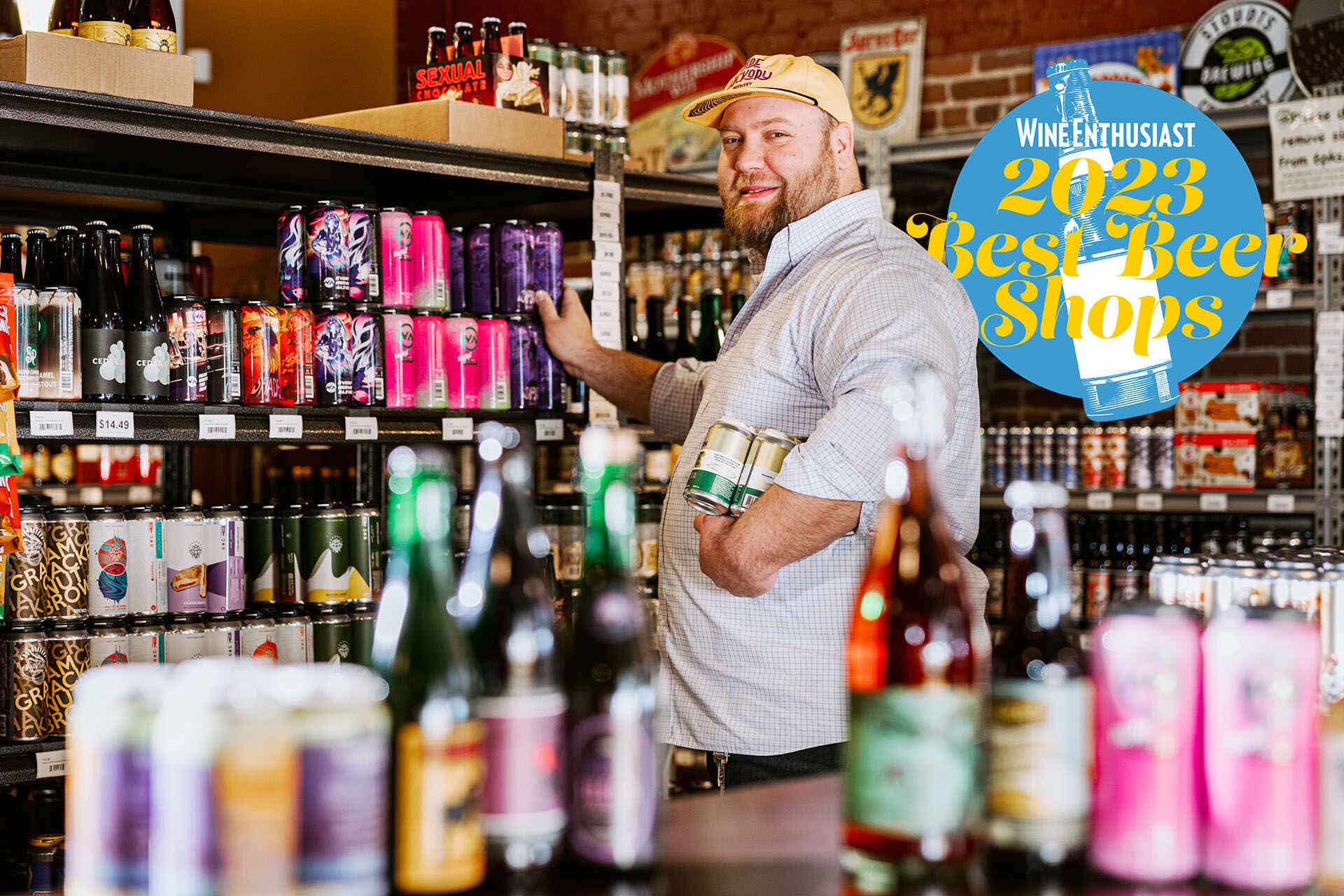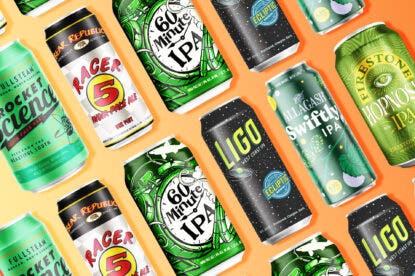In the early morning hours of July 12, news broke that San Francisco‘s beloved Anchor Brewing Company was closing and likely filing for bankruptcy. Many craft beer fans wept or flashed with rage.
In beer-drinking circles, folks of a certain age might tell the following story about Anchor Brewing with awe and reverence: In the mid-1960s, a young Fritz Maytag of the famed washing machine family was at his local watering hole in San Francisco. This establishment was one of a handful that served steam beer produced by the local Anchor Brewery, which had been founded in 1896. One fateful afternoon, the bartender told Maytag that the pint before him would be among the last. The brewery would be closing soon.
Intrigued, Maytag headed over to the brewery and bought a controlling stake in the company to keep it afloat. But there seemed to be no last-minute saving grace for Anchor this week.
With the Maytag sale, Anchor Brewing cemented itself as the first of the post-Prohibition craft brewers. It would be another decade before the first modern microbrewery would open in the United States. The brewery was synonymous with its flagship steam beer, a precursor to what is now known as California common. Maytag later trademarked “steam beer” and would regularly defend it, believing that any inferiorly made beers would harm his brand.
As the craft beer industry grew in the ‘80s and ‘90s, new brewers looked to their elders. Anchor Brewing joined industry pioneers like Sierra Nevada Brewing, Samuel Adams and a few others in creating beers of note; these institutions remained unwavering in the fight for small brewery survival. As a result, a generation of beer drinkers and brewers were brought up on Anchor Steam, Sierra Nevada Pale Ale and Samuel Adams Boston Lager. The recipes and the individuals behind the breweries shaped innovation, ingenuity, thought and pride in the beer landscape.
Of course, of late, Anchor Brewing was arguably only craft in name. In 2010, Maytag sold the brewery to the Griffin Group, the consulting and investment firm behind Skyy Vodka. Those owners would sell to Sapporo USA, the American arm of the Japanese brewery, in 2017.
Could Anchor Brewing’s closure be the result of a lack of support from younger drinkers who failed to back a brand critically important to U.S. beer culture? Maybe. But declining sales numbers showed the brand lost popularity amongst all drinkers. Nostalgia is nice, but it does not always sell beer.
Certainly, Sapporo USA could have done more to shore up the brand. But the closure might also be tied to something else, rarely discussed: The beer produced by Anchor was just OK.
The brewery once had national distribution for its brands, including Old Foghorn, a barleywine, Liberty Ale, a pale ale and Anchor porter. The greater the distance these beers were served from the brewery’s digs on San Francisco’s Potrero Hill, the more flavor they seemed to lose.
Over the years, I recall bottles that were oxidized. A strange, metallic taste from Steam would appear, or muted flavors would be present. Drinking at locations physically closer to the brewery helped a little, but some of it was inescapable: Anchor used open fermenters during the brewing process, which made it possible for unintended microbes to flourish despite brewers’ best cleaning efforts.
This was, of course, always part of the charm of Anchor. The slight unpredictability, old-world techniques and plucky spirits of its makers. It was a beer that reminded us of a city so easy to love.
But flaws like these were forgivable when there were fewer than 250 breweries in the country. As craft beer exploded in the U.S.—and the availability of high-quality brews increased dramatically—fewer and fewer drinkers settled for mediocrity. Now the country has nearly 10,000 breweries, and reliability in quality is important for survival.
There is also a modern drinking sensibility, perhaps influenced by the local food movement, that drinking local is better. These days, buying a beer that has traveled 3,000 miles only to sit indefinitely on a shelf—as Anchor beers have done in recent years—seems antiquated.
There are exceptions to this rule, of course. Sierra Nevada and Samuel Adams, for instance, invested in quality and innovation, managing to release new beers (or acquire other brands) that kept with the times and shifting tastes.
Indeed, Anchor Brewing tried, too. As the India pale ale became the darling of the craft section a decade ago, Anchor—which had revolutionized the style in the 1970s with Liberty Ale—tried its hand at the modern ways. But the results weren’t successful as hoped.
“Anchor IPA was born in 2013, just before I got there,” Scott Ungermann the former brewmaster at Anchor told me on the Drink Beer, Think Beer podcast. “I can’t lay claim to that beer. But I can tell you that one of the things I realized really quickly was that we didn’t have the right technology to do dry hopping.”
Fritz had pretty much invented his own technology with what Ungermann characterized as “giant tea bags.” As a result, Anchor was beholden to using all whole cone hops.
“And that doesn’t make your modern IPA. It wasn’t working,” he said. “It had far too much specialty malt in it—it was far too malty—and the hot profile was muted. And not all that pleasant, either.”
The beer languished on shelves and did not get better with time. Other attempts at getting in on trends—like Mexican lager, hazy IPA or modern west coast IPA—came too late and often did not have the flavors or cache that drinkers desired.
The brand’s sudden closure seems to be a last-minute turnaround. Last month, it appeared that Sapporo USA would diminish Anchor rather than close it outright. It had announced that the brewery’s national footprint would be erased, and the brand would only be available in California, where it had been performing best. Sapporo USA also announced the discontinuation of Our Special Ale, a spiced holiday brew that was an annual favorite since its release in 1975. This week’s news, however, has many of beer’s faithful considering one last pilgrimage.
Despite Anchor’s failings, I think about it almost daily. I carry on my key ring a thin titanium bottle opener cut into the shape of the brewery’s distinct bottle. It is one of very few branded brewery items I own, and it was given to me nearly 20 years ago by Maytag himself. I’ve used it thousands of times, although I cannot say with certainty when was the last time it opened an Anchor bottle.
Few brands have lasted as long as Anchor, and its legend will likely grow after the last tank is emptied. There is comfort in legacy, but certainly sadness for those about to lose their jobs. It’s another reminder of the constantly changing landscape that is alcohol.
In some ways, the closure hints at the craft beer pioneer’s true legacy: Anchor Brewing helped create and foster a craft beer industry so robust that the brand itself was eventually eclipsed by it. To its sad end, we’ll hoist up a Steam.
Last Updated: July 14, 2023


















